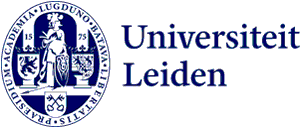
Looking for connection through the power of Storytelling
Anyone can tell a story. That is the guiding principle Hans Dekker, Senior programme leader at the Centre for Professional Learning (CPL), and his colleague Suzanne Verhees use to kick off their multi-day Storytellling course. Arjan van Unen participated in the course over the summer and learned how to come up with a good story in a business setting. ‘It was a very special experience. You’re challenged to find out what drives you, your motivation, and you learn how to take the listener along in your story.’
Van Unen is co-founder of Doser, a company supplying tailor-made medication via 3D printers. A startup located at PLNT, the Leiden Centre for Innovation and Entrepreneurship. PLNT provided Van Unen with the possibility to enrol in the Storytelling course. ‘Right up my alley. It matches the phase I’m currently in with my company. We’re holding pitches at events; we’re talking to investors about what we’re trying to accomplish. Convince doctors and pharmacists of our plans. You’ve got to be able to take people along in your story. So, we really need to tell it correctly.’
The course at PLNT is one of the made-to-measure courses provided by Dekker and CPL. ‘Anything is possible: a multi-day course, made-to-measure coaching, but we also train teams from companies or individuals to tell their story, to put themselves in the spotlight. To tell a story from the heart that really strikes a chord.’
Creating connections
At the start of the course, people are tasked with finding their personal motivations. Dekker: ‘Storytelling revolves around three steps: finding stories, composing stories, and telling stories. What is your spark, what is it that makes your eyes twinkle? That’s what we’ll be looking for. In a business setting it’s often all about facts, numbers, and arguments. But most often it’s more appealing to listen to a real-life story about peoples’ experiences and their motivation. This way, you provide your listeners with a different perspective. The power of storytelling is creating connections. It actives a different part of your brain, the creative part. You’re forced to leave the beaten track behind, both as listener and as storyteller. To do so, you’ll have to overcome a few hurdles along the way. Which is why it’s important for us to provide a safe environment during the course.’
Painting a picture to tell a story
Van Unen also had to overcome a few of those hurdles. ‘On the first day we dove in straightaway, and emotions ran high in our group. It was really touching. You learn to think in images and use them to build your story and draw your listener into your story. I used a story about my grandmother’s medication as a starting point. It’s not difficult for me to mention during a conversation that one third of the elderly take more than three pills a day. But that’s not very relatable. By painting a picture of my grandmother’s medicine cabinet, you make your story come alive for everyone. Very educational.’
Keep it simple
Another useful lesson for Van Unen was to keep his story simple. ‘I have a lot of information I want to share, and I also tend to speak very fast. Providing people with an overload of information, which makes it impossible to retain. I try to pace myself now and make sure that my story is easy to follow. That’s very important when owning a startup, because your story is your selling point. So, you really need to have a clear image of who your audience is and what your motivation and targets are. Why are you crazy enough to put in those long hours every day working for your company? That’s your story. We have the ambition to provide tailor-made medication to anyone in need of medication, without side-effects. That’s our dream and ambition and that’s what we’re working hard to achieve each and every day.’
Precious
Dekker agrees: formulating your core message is very important indeed. ‘That’s where it starts. It doesn’t matter if you’re a health care manager, a researcher, or a startup owner. For me, the best thing about teaching these courses is that people learn to connect with their core and to be brave enough to tell others about it. In order to do so, you’ll have to overcome a few hurdles. Participants are often unable to put their core into words. They keep looking until they get it right, we then ask them to own it and that means: allowing yourself to be vulnerable. And finally, they also need to learn how to tell others about it in an appealing way. When they finally get it and succeed, that moment is so precious to me. I truly enjoy it. And the best thing is: it’s multi-applicable. Whether you’re having to give a presentation during a meeting. Or you’re trying to make a point while standing near the coffee machine. But also, when you’re having to inspire a large audience. You can make things as big or small as you like and that’s why this course is ideally suited for anyone trying to achieve this goal in a business setting.
You can find more information on the Storytelling course here.
